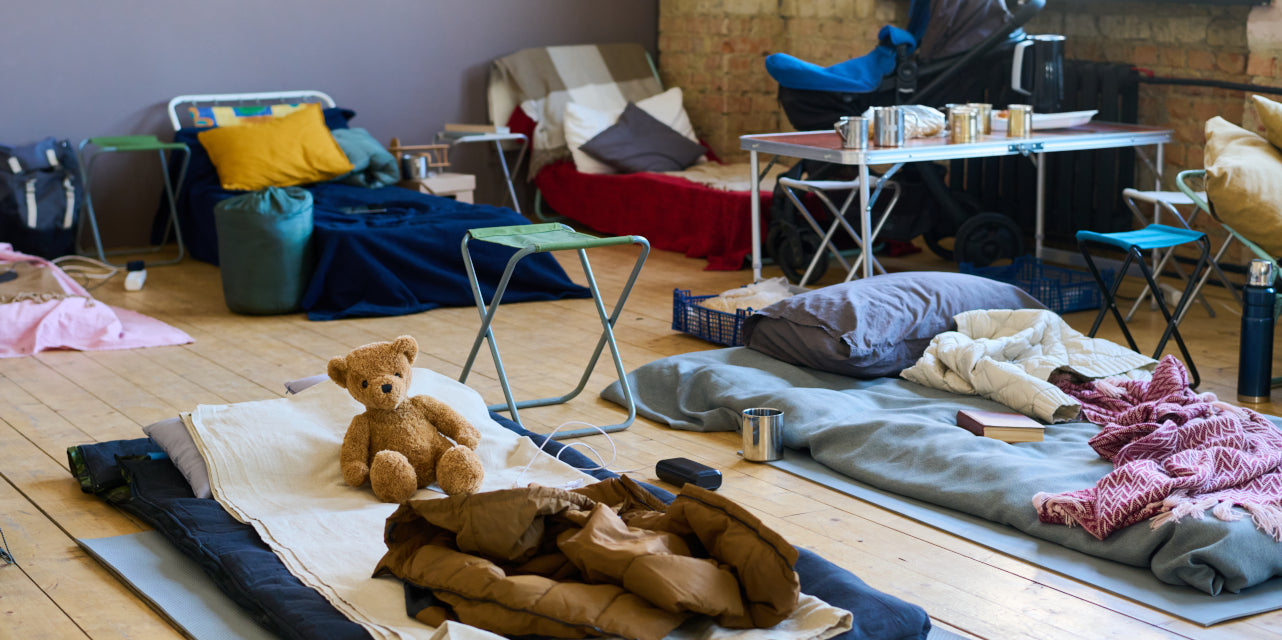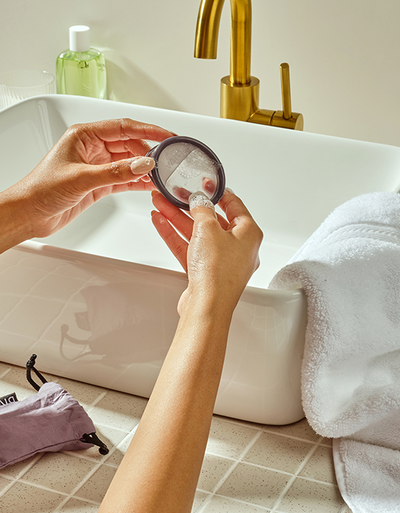
In this article /

« Peach » est un surnom qu'elle a hérité de ses amies d'un refuge pour femmes local, où elle réside depuis quelques semaines. Peach est actuellement sans abri à Toronto, et elle se bat continuellement pour trouver un abri et un logement.
Nous demandons à Peach comment elle gère ses règles chaque mois alors qu'elle est sans abri. Elle hausse les épaules. «C'est stressant», dit-elle. "Je ne sais pas comment le décrire autrement."
Peach poursuit en expliquant les efforts qu'elle a déployés pour accéder aux produits nécessaires pour gérer un seul jour de ses règles tout en vivant dans la rue. « Une fois, je mendiais et j'avais une pancarte qui disait « tampon de rechange » parce que j'en avais besoin… Parfois, je pense simplement à entrer dans un magasin et à en voler un ou deux… Mais je ne le fais pas, parce que ma conscience ne me laissera pas tranquille.
L’histoire de Peach est pour le moins édifiante. Il est horrible de penser qu'une personne sans abri ne puisse pas accéder à des produits considérés comme une nécessité mensuelle. Malheureusement, des milliers de personnes sans abri et/ou pauvres en Amérique du Nord ne peuvent pas accéder aux produits menstruels parce qu'elles n'en ont tout simplement pas les moyens, et les refuges ou les centres d'accueil communautaires ont rarement suffisamment de fournitures. En fait, les produits menstruels font partie des articles les plus fréquemment demandés dans les refuges, mais les moins fréquemment donnés .
Qu’est-ce que la pauvreté menstruelle ?
Chatelaine estime que les menstruations au Canada dépensent environ 66 $ par année uniquement en produits menstruels – cela n'inclut pas le coût des articles supplémentaires souvent nécessaires pour gérer les pertes de liquide ou les pertes de liquide en milieu de cycle, les analgésiques ou les sous-vêtements de rechange. Pour de nombreuses personnes sans abri ou en grande difficulté financière, ce coût est prohibitif et, par conséquent, elles vivent dans une pauvreté périodique.La pauvreté menstruelle décrit l'incapacité d'accéder aux produits menstruels en raison de contraintes financières. Rien qu’à Toronto, plus de 22 000 personnes vulnérables ont besoin de produits menstruels.
Comment pouvons-nous mettre fin à la pauvreté menstruelle dans notre communauté ?
La pauvreté périodique est complexe car elle contribue souvent aux facteurs qui perpétuent les cycles de pauvreté et de marginalisation .Par exemple, si une personne n’a pas les moyens d’acheter des produits menstruels, ses règles peuvent l’empêcher d’aller au travail ou à l’école, d’assister à des entretiens ou de participer à des programmes communautaires, ce qui entrave par la suite sa capacité à profiter de ces opportunités pour changer sa situation d’itinérance ou de pauvreté.
Afin d’éliminer la pauvreté menstruelle, nous devons établir l’équité menstruelle . « L'équité menstruelle » fait référence à la création d'un accès égal aux produits d'hygiène menstruelle et à l'éducation reproductive pour toutes les personnes qui ont leurs règles, quelles que soient leurs contraintes financières ou autres obstacles qu'elles peuvent rencontrer.
Comment parvenir à l’équité menstruelle ?
Nous pouvons parvenir à l’équité menstruelle en entamant d’abord une conversation sur le sujet, car l’équité menstruelle nécessite la participation de la communauté, des entreprises et de tous les niveaux de gouvernement.Par exemple, Diva est devenue un leader de l'industrie dans la défense de l'équité menstruelle grâce à son soutien à des initiatives communautaires qui fournissent aux personnes vivant dans des refuges qui ont leurs règles et ont accès à des toilettes un accès à des produits menstruels.
En entamant un dialogue entre les chefs d’entreprise, les politiciens et les défenseurs de la communauté, nous pouvons faire prendre conscience du fait que la pauvreté menstruelle est réellement limitante et encourager le développement de politiques et de ressources qui garantiront que toutes les personnes qui ont leurs règles puissent accéder aux produits dont elles ont besoin.

Que vous soyez nouveau sur la question de la pauvreté menstruelle ou un défenseur chevronné, nous vous invitons à nous aider à créer un changement et à établir l'équité menstruelle à Toronto en soutenant This is Period Poverty – une campagne créée et produite par Winslow Magazine pour sensibiliser la pauvreté menstruelle à Toronto, la plus grande ville du Canada, en mettant en lumière les histoires de personnes qui ont vécu la pauvreté menstruelle dans notre communauté.
Vous pouvez contribuer à promouvoir l'équité menstruelle à Toronto en nous aidant à atteindre notre objectif de collecte de fonds de 5 000 $ pour soutenir The Period Purse . The Period Purse est une organisation à but non lucratif qui cherche à établir l’équité menstruelle par la sensibilisation, l’éducation et le plaidoyer. À ce jour, The Period Purse a fourni des produits pour prendre en charge plus de 18 981 périodes.
Aidez à partager la conversation en utilisant #ThisIsPeriodPoverty et suivez la campagne sur Winslow Magazine , Instagram , Twitter et Facebook . Vous pouvez également suivre les réseaux sociaux de DivaCup à @thedivacup sur Instagram, Twitter et Facebook.











